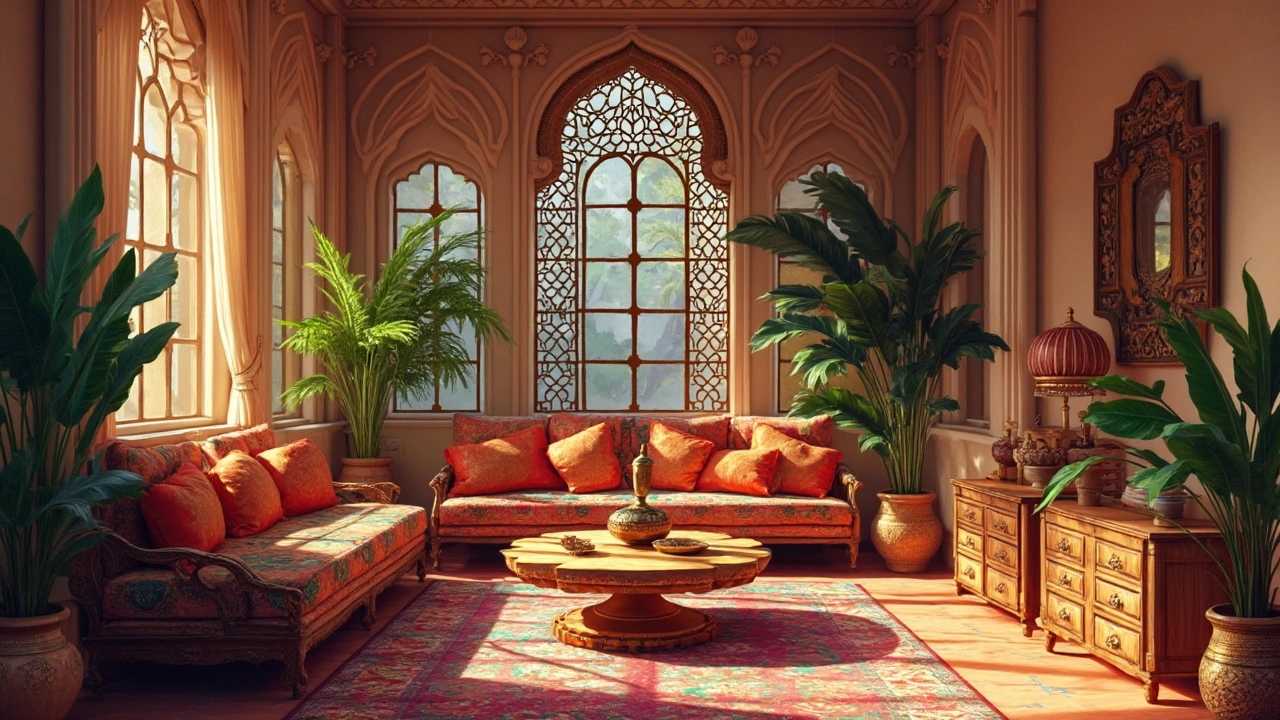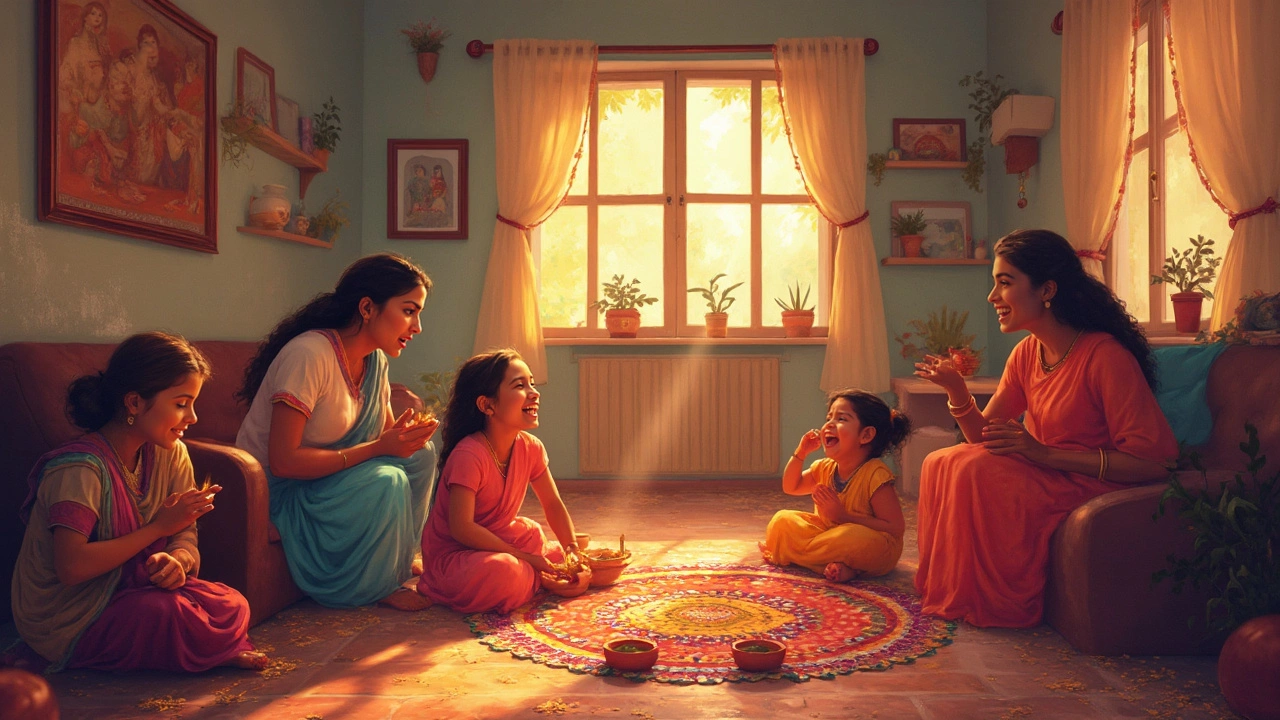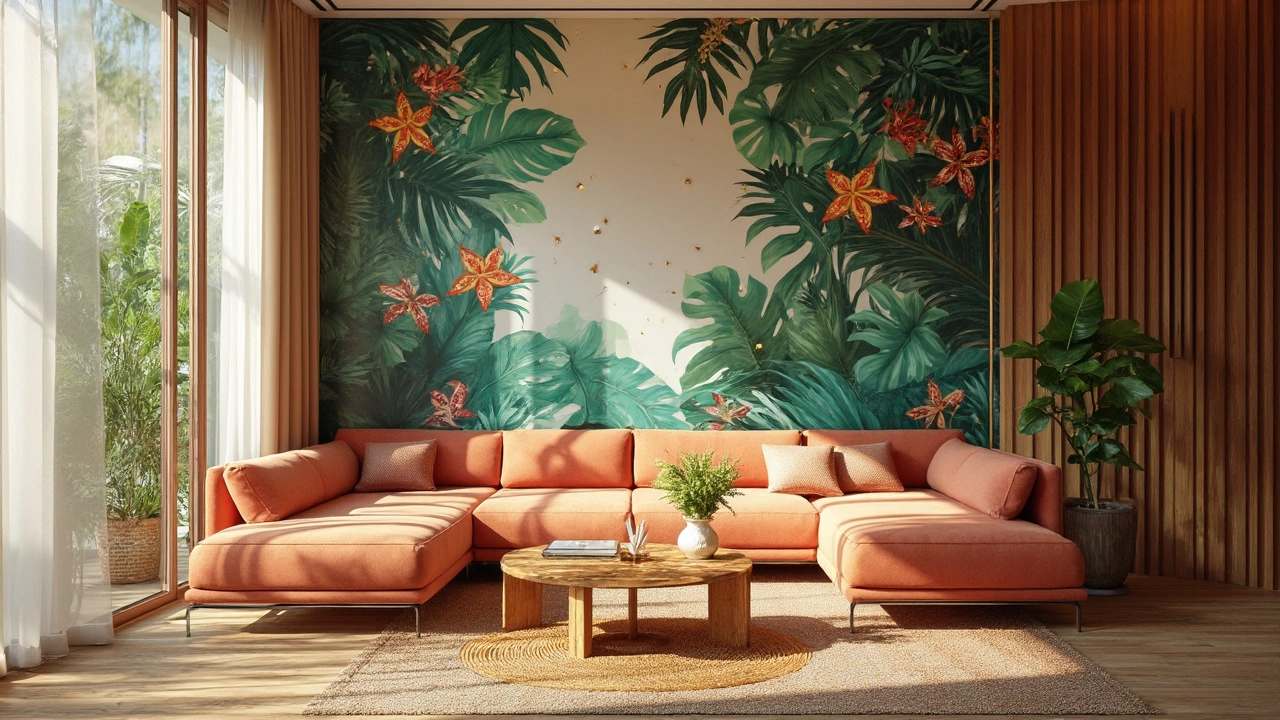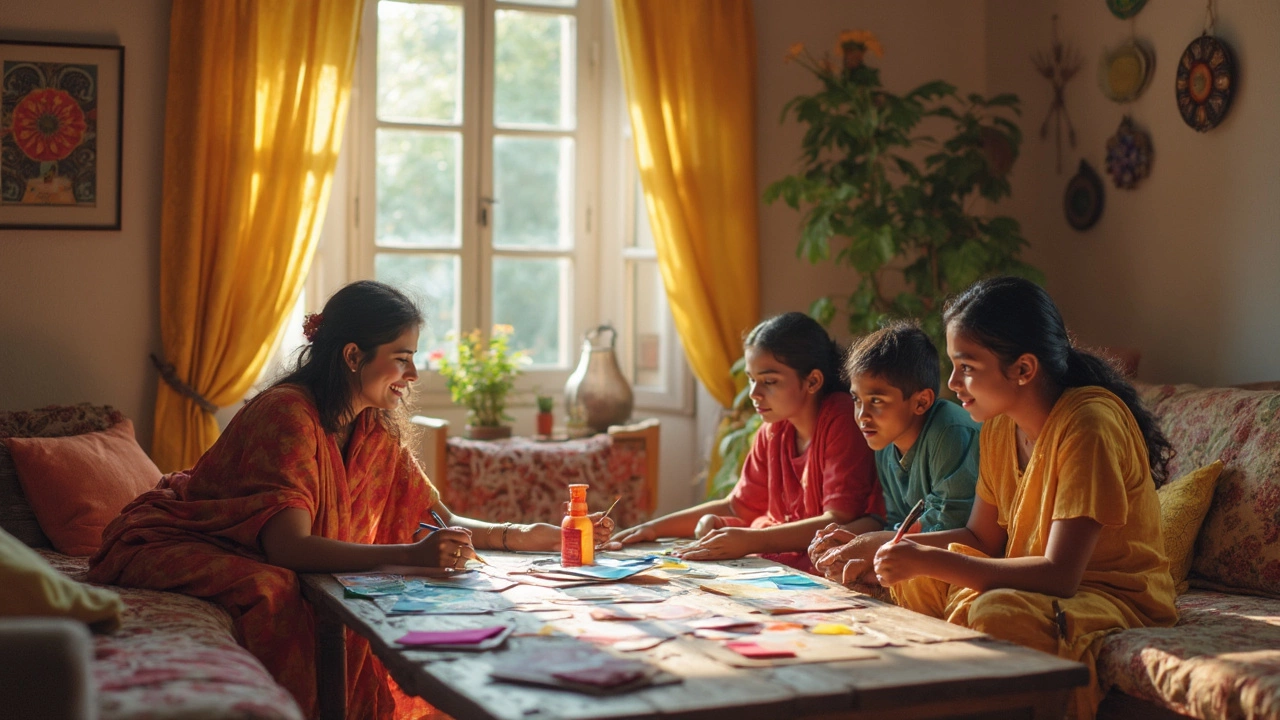The 3 E's of Interior Design: Elevate Your Home Style

Ever walked into a room that just felt right? Like everything belonged and flowed naturally? That's not magic; it's solid interior design. Focusing on the 3 E's—Element, Emotion, and Efficiency—can turn any living space into something both functional and beautiful.
Let's kick things off with Elements. Think of this as the building blocks of your space: fabrics, colors, furniture, lighting. Choosing pieces that complement each other, while using a consistent theme, can create harmony in your home. Picture a room with earthy tones, a touch of greenery, and soft textures—it feels connected to the outside world, doesn't it?
But more than just looks, every room should stir up some Emotion. This is about how a space makes you feel. Maybe you want your living room to be cozy and inviting or your kitchen to be lively and inspiring. Clever use of color and decor can evoke these feelings effortlessly.
Finally, don't forget Efficiency. It's not just about cramming everything into one room; it's about maximizing space smartly. That could mean multifunctional furniture or clever storage ideas—whatever makes life a little easier and more organized. Efficiency isn’t only about practicality but also enjoyment, making sure your space truly works for you.
- Understanding Elements
- The Role of Emotion
- Efficiency Matters
- Balancing Aesthetics and Functionality
- Practical Tips for Every Room
- Trends in Modern Interior Design
Understanding Elements
Getting your head around the 'Elements' in interior design is like mastering its rulebook. These are the building blocks; everything from color and light to furniture and space. It all starts with what fills the room and how these things interact.
Colors and Textures
Colors set the mood. Think blues for calmness, reds for energy. Balance is key. You don’t want your living room looking like a crayon box gone wild. Stick to a palette that works with your overall theme. Texture adds depth. Contrast a sleek leather sofa with a fluffy throw for a touch of warmth. It's these small touches that make a difference.
Lighting
Lighting can make or break a room. Natural light is your best friend. Keep windows unobstructed to bring in as much daylight as you can. Layer different lighting; use overheads, floor lamps, and spot lights to highlight areas. At night, warm lights offer a cozy feel, unlike harsh white lights that can be jarring.
Furniture and Layout
Selecting furniture is not just about looks. Consider how it fits your lifestyle. Got kids? Go for durable materials. Love hosting? Look for expandable dining tables. Layout impacts how people move and feel in a space. Avoid overcrowding by maintaining a path for easy flow.
Here's a handy table on commonly used materials and their pros:
| Material | Pros | Cons |
|---|---|---|
| Wood | Durable, timeless | Can scratch easily |
| Metal | Strong, durable | Can be cold |
| Glass | Open, light | Fragile |
Each choice brings a unique flavor to your home. Combining different elements wisely creates an aesthetic balance that's pleasing and practical. Keep these basics in mind to ensure your modern home feels just right, no matter which room you're updating.
The Role of Emotion
Think about how a space makes you feel. Walking into a room that feels just right is often because the emotional tone is spot on. The modern home isn't just about sleek lines and cutting-edge tech; it's also about how it resonates on a personal level. Every color, texture, and piece of furniture contributes to this vibe.
Setting the Mood with Color
Color is a biggie when it comes to emotion. Reds and yellows can energize a room, making them perfect for a living room where gatherings happen. On the flip side, blues and greens are calming, ideal for bedrooms or any home decor that needs a chill vibe. Have you ever noticed how a soft blue room can make you feel more relaxed after a hectic day?
Texture, Texture, Texture
Don’t underestimate texture, either. It adds depth to a room and can completely change how it feels. A plush rug underfoot or a silky throw across the couch doesn't just elevate the style but also adds a tactile element that makes a space more welcoming.
Lighting: The Game-Changer
Lighting is more of a mood setter than you might think. Dim lights with warmer tones can make a larger room feel cozier and more intimate. Conversely, bright, white lighting is great for places where you need to focus or feel invigorated, like a home office. Smart lights that adjust based on the time of day can do wonders to keep your emotional energy flowing the right way.
Here’s a quick pro-tip: Incorporate layered lighting. Use a mix of overhead, task, and ambient lighting to ensure you can tailor the mood to whatever activity you're doing at the moment.
Furniture that Tells a Story
Functional furniture can also carry an emotional weight. A sturdy wooden dining table might remind you of family meals and togetherness, while a comfy armchair might signal a space for personal retreat. Integrating these elements into your design is less about sticking to trends and more about personal connection.
The magic of interior design is its ability to make us feel something. When every piece—from colors to interior design elements—plays its role in setting the right emotion, your home isn't just a place you live; it becomes a sanctuary you love.
Efficiency Matters
When it comes to smart interior design, efficiency is key. Let's face it: nobody wants to fumble around a cluttered room just to find a spot for their morning coffee. Efficient design means making the most of what you've got, using every inch wisely without sacrificing style.
Smart Storage Solutions
Efficiency starts with storage. No, you don't need a bigger house; you need smarter solutions. Built-in shelves, under-the-bed drawers, and multifunctional furniture pieces like ottomans with hidden compartments can transform your space. Imagine a living room where the coffee table stows board games or blankets. Genius, right?
Streamline Your Layout
Arranging your furniture with traffic flow in mind is a real game-changer. Keep pathways clear—ensure there's enough space to walk around without bumping into things. Ask yourself: do I need this bulky recliner, or will a sleek, modern chair do the trick? Sometimes less is more.
"Design is not just what it looks like and feels like. Design is how it works." — Steve Jobs
Technology and Energy Efficiency
In today's modern home, tech isn't just a luxury; it's a critical component of efficiency. Smart home devices can help control lighting, sound, and temperature to save energy and enhance comfort. The latest smart thermostat can shave off up to 10-15% off your heating bill annually. That's not just saving money, it's living smart!
- Install LED bulbs—longer-lasting and energy-saving.
- Use smart plugs to remotely control devices.
- Consider solar panels if feasible.
Investing in these areas can cut down on monthly expenses and make life a lot easier.
| Feature | Potential Saving |
|---|---|
| Smart Thermostat | 10-15% annually |
| LED Bulbs | Energy usage reduced by 75% |
Embrace these simple tweaks and you'll find out why efficiency is more than a buzzword—it's a lifestyle. Not only do these tips make your home more liveable, but they also impact your wallet in a positive way. So next time you're tempted to buy a knick-knack, remember: in the world of home decor, less truly is more.

Balancing Aesthetics and Functionality
Creating a home that’s not only beautiful but also practical is every homeowner's dream. But how do you keep your modern home looking great while making sure it suits everyday needs? It's all about finding that sweet spot between interior design flair and smart functionality.
Prioritize Your Space Needs
First, consider what you use each room for. Your living room could be a relaxation hub or an entertainment zone. Think about the primary purpose and choose furniture and decor accordingly. For example, if it's more about family time, emphasize comfy seating arrangements over elaborate, unused decor.
Select Versatile Furniture
Furniture that serves multiple purposes is a big win. Think sofas that transform into beds or coffee tables with hidden storage. These pieces help maximize space without sacrificing style. They’re practically helpers, making sure your home decor stays neat and uncluttered.
- Choose tables with built-in shelves for extra storage.
- Opt for stackable or foldable chairs for small spaces.
- Incorporate beds with drawers underneath for bedrooms.
Embrace Technology
In today's digital age, smart home technology can contribute to both the aesthetics and efficiency of your space. Smart lighting, for instance, not only adjusts brightness according to the time of day but can also set ambiance with different colors. Techniques like these can help shave off energy costs too.
Maintain a Cohesive Look
Your home's style doesn't need to compromise on function. Stick to a consistent color palette and design theme throughout the house to create a look that ties everything together. This way, even if individual items are practical, they’ll also be visually appealing, keeping your design goals aligned.
Here's a fun fact: According to a recent survey, 70% of homeowners believe having a functional space enhances their quality of life—a clear nod to why balancing aesthetics with utility is so vital.
Practical Tips for Every Room
Whether you're sprucing up your interior design or doing a complete overhaul, getting each room right can make a big difference in how your home feels. Different spaces have different needs, so let’s break it down room by room.
Living Room
Your living room is often the heart of your home, where you'll entertain guests and relax after a long day. Prioritize seating arrangements to facilitate conversation. Consider a mix of a large comfortable sofa and individual chairs to provide flexible space. Lighting plays a crucial role here—combine overhead lighting with floor or table lamps for a cozy vibe.
- Use rugs to define spaces and add warmth.
- Throw in some cushions and cozy blankets for texture.
- Don’t forget wall decor; a few art pieces can transform a space.
Kitchen
The kitchen is where functionality meets style. Make sure you have enough storage space to keep countertops clear, which is key for both efficiency and aesthetics in this area. Open shelving can give an airy feel and display your favorite dishware.
- Invest in good lighting over work areas like islands and countertops.
- Think about the work triangle: stove, sink, and fridge should form a triangle for easy movement.
- Maximize vertical storage with hanging racks or tall cabinets.
Bedroom
This is your personal sanctuary. Start with the bed – it’s the focal point. Opt for a high-quality mattress and cozy bedding for comfort. Nightstands on each side can add both functionality and symmetry.
- Select soothing colors that help you relax.
- Get blackout curtains to block out early morning light.
- Incorporate a seating area if space allows.
Bathroom
A small space that can offer big possibilities. Consider storage solutions like under-sink cabinets and shower caddies to keep everything organized.
- Choose light colors to make the space feel larger.
- Wall-mounted fixtures and minimal clutter enhance a modern look.
- Greenery or small plants can bring life to this often-overlooked space.
Home Office
If remote work is part of your routine, a dedicated workspace is essential. Prioritize ergonomics with a good chair and desk setup.
- Position your desk near a window for natural light.
- Incorporate shelving to keep paperwork tidy.
- Add personal touches like artwork or plants to motivate and inspire.
Each room presents its own set of challenges and opportunities. By focusing on these practical tips, you can enhance your modern home interior design to make every corner of your home functional and stylish.
Trends in Modern Interior Design
Keeing up with modern home interiors trends can be a great way to design a home that's both stylish and functional. Let's dive into some of the freshest trends that can give your home a signature touch.
Biophilic Design
Nature vibes are here to stay. Biophilic design emphasizes elements like natural light, greenery, and even the use of natural materials like wood and stone. This trend aims to connect inhabitants with nature, offering a sense of tranquility and well-being. Imagine a living room with a wall of plants and sunlight streaming through large windows. Feels like a mini retreat, right?
Bold Colors and Patterns
While pastels held the spotlight for years, bold colors are making a comeback in the world of interior design. Think vivid greens, deep blues, and rich maroons combined with striking patterns. These choices can help inject personality into your space.
Maximalism
If you've got a lot to express, maximalism might be your thing. It's all about filling your home with items you love, ranging from colorful art to vintage furniture. The key is balance—organizing items in a way that looks curated, not cluttered.
Smart Home Technology
Tech is finding more ways to integrate seamlessly with our homes. Think smart lighting, thermostats, and even furniture with built-in charging ports. This trend focuses on making your home more efficient and adaptable to lifestyle needs.
Multi-Functional Spaces
The pandemic taught us the value of having multi-functional spaces. Home offices that double as guest rooms or kitchens with hidden storage for work supplies are becoming a necessity. It's all about making your space work harder for you.
Eco-Friendly Materials
People are more aware of their environmental impact, and that extends to home decor. Look for sustainable materials like recycled woods, bamboo, and upcycled furniture to align with this eco-conscious trend.
| Trend | Description |
|---|---|
| Biophilic Design | Connects interior spaces to nature, using natural elements, fostering well-being. |
| Bold Colors | Utilizes vivid hues and striking patterns for a vibrant atmosphere. |
| Smart Home | Integrates technology for convenience and efficiency, blending aesthetics with functionality. |
By tapping into these trends, you can create a space that's not only on point but also perfectly tailored to your lifestyle. Whether you're reimagining one room or overhauling the entire house, these insights can guide your next steps in home design.

